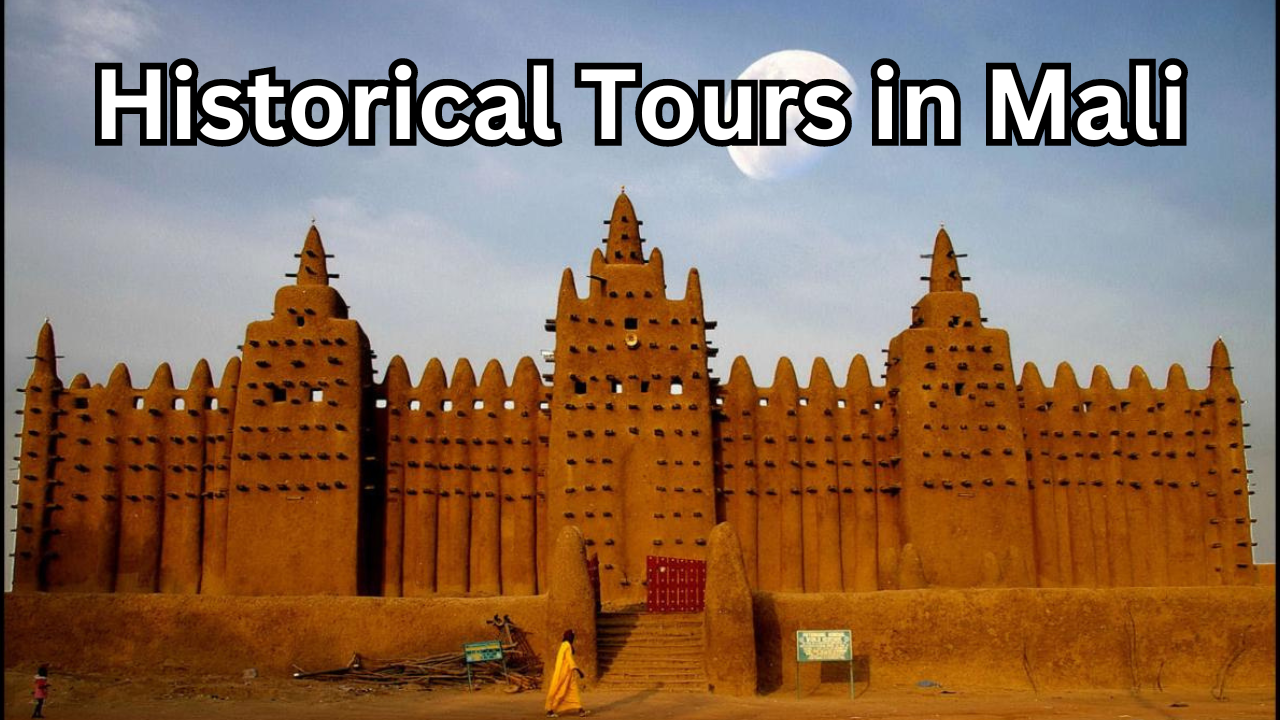Table of Contents
Introduction
Mali, a landlocked country in West Africa, boasts a rich tapestry of history and culture that dates back centuries. From the ancient centers of learning in Timbuktu to the vibrant markets of Djenne and the cliffside villages of Dogon Country, Mali offers a captivating journey through time. Historical tours in Mali not only unravel the remnants of empires and kingdoms but also showcase the resilience and creativity of its diverse peoples.
Exploring Mali’s historical sites provides a profound insight into its past glory and contemporary challenges. Each destination, whether the legendary Timbuktu with its mosques and libraries, or the bustling streets of Bamako with its museums and cultural festivals, reveals layers of Mali’s cultural heritage waiting to be discovered. As travelers embark on these tours, they delve into a world where history intertwines with everyday life, offering a deeper understanding of Mali’s identity and its place in the global narrative of human civilization.
Brief Overview of Historical Tours in Mali
Mali, situated in the heart of West Africa, holds a significant place in the annals of human history. It was here, amidst the fertile lands along the Niger River, that powerful empires once flourished, leaving behind a legacy that resonates through the ages. From the legendary Mali Empire, celebrated for its wealth and leadership under Mansa Musa, to the scholarly haven of Timbuktu, Mali has been a cradle of cultural exchange, scholarship, and artistic expression.
Importance of Historical Tours in Understanding Mali’s Culture and Heritage
Historical tours in Mali offer a profound journey into the soul of this nation, allowing visitors to trace the footsteps of ancient rulers, scholars, and artisans. These tours illuminate Mali’s cultural tapestry through its architectural marvels like the Great Mosque of Djenne, the intricate adobe structures of Segou, and the cliffside villages of the Dogon Country. Each site tells a story of resilience, creativity, and enduring traditions, offering insights into Mali’s diverse ethnic groups, their customs, and their contributions to world history.
By exploring Mali’s historical sites, travelers not only witness tangible relics of the past but also engage with living traditions that have shaped the country’s identity. From traditional festivals that celebrate harvests and rites of passage to the vibrant markets where local crafts thrive, historical tours immerse visitors in Mali’s dynamic cultural landscape. They provide a deeper appreciation for the challenges and triumphs that have shaped modern Mali, fostering a connection between past and present that is essential for understanding its rich heritage in today’s global context.
Timbuktu: A Center of Learning and Trade
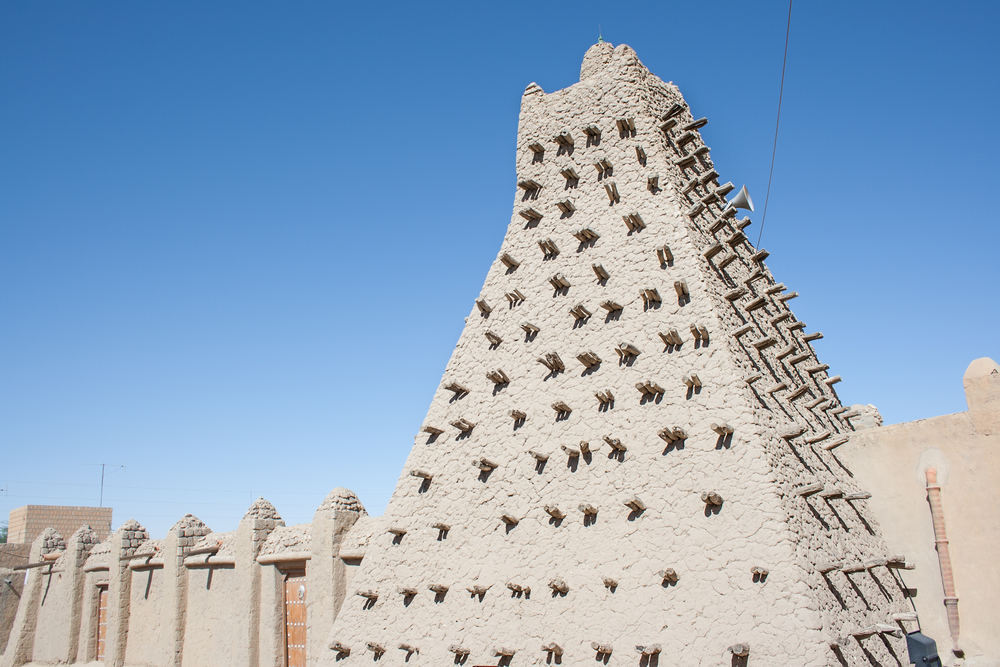
Timbuktu, nestled on the southern edge of the Sahara Desert, holds a legendary status as a beacon of learning, trade, and cultural exchange in West Africa. From the 13th to the 16th centuries, it flourished as a vital hub along the trans-Saharan trade routes, connecting North Africa with sub-Saharan Africa. Its strategic location on the Niger River facilitated the exchange of goods, ideas, and knowledge, making it a melting pot of diverse cultures and intellectual pursuits.
Key Landmarks in Timbuktu
Djinguereber Mosque
The Djinguereber Mosque stands as one of Timbuktu’s most iconic landmarks and a testament to its historical significance. Built in 1327 by the sultan of Mali, Mansa Musa, it is one of the oldest mosques in West Africa. Constructed from mud bricks and wood, the mosque’s distinctive Sahelian architecture reflects the region’s traditional building techniques and aesthetic sensibilities. It continues to serve as a place of worship and a symbol of spiritual and scholarly heritage in Timbuktu.
Ancient Libraries
Timbuktu gained renown as a center of scholarship and intellectualism, attracting scholars, poets, and theologians from across the Islamic world. The city housed numerous private and public libraries that preserved a vast collection of manuscripts on subjects ranging from astronomy and medicine to philosophy and theology. These manuscripts, written in Arabic and local languages, offer invaluable insights into African history, intellectual traditions, and the global exchange of ideas during the medieval period.
Visiting Timbuktu today allows travelers to marvel at these architectural wonders and explore the rich intellectual legacy preserved in its ancient libraries. It offers a profound glimpse into a time when Timbuktu stood at the crossroads of civilizations, fostering a spirit of innovation and cultural exchange that continues to inspire admiration and intrigue..
Djenne: UNESCO World Heritage Site
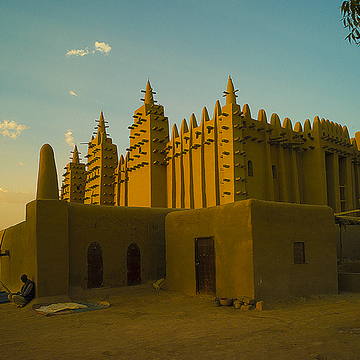
Djenne, located in central Mali on the flood plains of the Niger River, is renowned as a UNESCO World Heritage site and a testament to Mali’s rich cultural heritage. It represents a blend of architectural brilliance, cultural traditions, and vibrant community life that has thrived for centuries.
Main Attractions in Djenne
Great Mosque of Djenne
The Great Mosque of Djenne stands as one of the most impressive examples of Sahelian architecture and is celebrated as the largest mud-brick building in the world. Originally built in the 13th century and reconstructed in its present form in the early 20th century, the mosque dominates the skyline of Djenne with its intricate facade adorned with wooden beams and decorative elements. It serves as a focal point for religious worship and cultural identity, reflecting the city’s historical significance as a center of Islamic learning and trade.
Traditional Mud-Brick Architecture
Djenne is renowned for its traditional mud-brick architecture, characterized by its earthy tones and geometric designs. The cityscape is dotted with residential buildings, communal structures, and marketplaces, all crafted from locally sourced materials and designed to withstand the region’s climatic conditions. This architectural style not only exemplifies the ingenuity of local craftsmen but also underscores the community’s commitment to preserving cultural practices passed down through generations.
Vibrant Market Scene
Djenne’s vibrant market scene offers visitors a glimpse into daily life and commercial activities in the heart of the city. The weekly market, held at the central square near the Great Mosque, buzzes with activity as traders from surrounding villages gather to sell a diverse array of goods, including local crafts, textiles, spices, and fresh produce. It is a cultural melting pot where traditions converge, and visitors can experience the rhythm and energy of Djenne’s bustling marketplace.
Visiting Djenne allows travelers to immerse themselves in Mali’s cultural tapestry, from the architectural grandeur of its mosque to the lively ambiance of its markets. It offers a profound insight into the resilience and creativity of its people, who continue to uphold centuries-old traditions amidst a rapidly changing world
Segou: Former Capital of the Bambara Kingdom
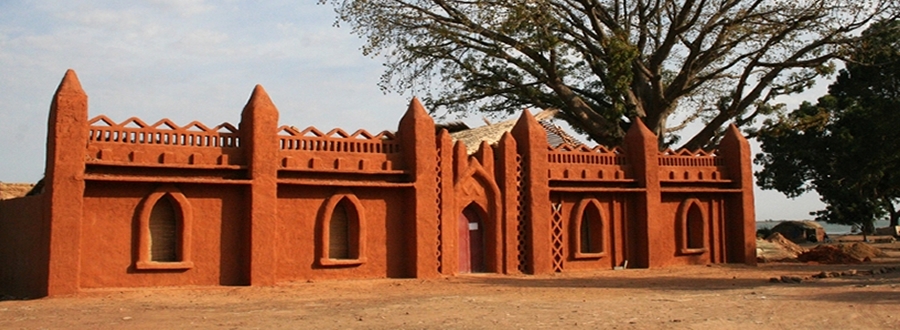
Segou, situated along the Niger River in southern Mali, holds a pivotal place in the history of the Bambara Kingdom, one of West Africa’s most influential pre-colonial empires. Established in the 17th century, Segou served as the kingdom’s capital and a thriving center of trade, agriculture, and cultural exchange.
History of Segou
Founded by Biton Coulibaly, Segou became a prominent political and economic hub under the rule of the Bambara kings. It flourished as a center of agriculture, particularly known for its production of cotton and indigo, which were traded extensively along the Niger River and beyond. The kingdom’s strategic location facilitated trade with North African merchants and European colonial powers, shaping Segou into a cosmopolitan city that attracted merchants, scholars, and artisans from across the region.
Notable Sites in Segou
Sekoro Fort
Sekoro Fort, located on the outskirts of Segou, stands as a reminder of the kingdom’s military and administrative prowess. Built in the early 19th century, the fort served as the royal residence and administrative center during the reign of King Biton Mamary Coulibaly. Today, it offers visitors a glimpse into Segou’s royal history through its well-preserved architecture and artifacts.
Riverside Town Atmosphere
Segou’s charm lies in its picturesque setting along the Niger River, where a vibrant riverside town atmosphere prevails. The riverbanks are lined with traditional mud-brick houses, bustling marketplaces, and lively fishing communities, offering a glimpse into daily life and cultural traditions in rural Mali. Visitors can explore the riverside promenade, witness traditional pirogue boats navigating the waters, and engage with local artisans practicing age-old crafts such as pottery and textile weaving.
Visiting Segou allows travelers to delve into Mali’s pre-colonial history and experience the enduring legacy of the Bambara Kingdom. From exploring historical landmarks like Sekoro Fort to immersing oneself in the rhythms of daily life along the Niger River, Segou offers a captivating journey through time and a deeper appreciation for Mali’s cultural heritage
Dogon Country (Bandiagara Escarpment)
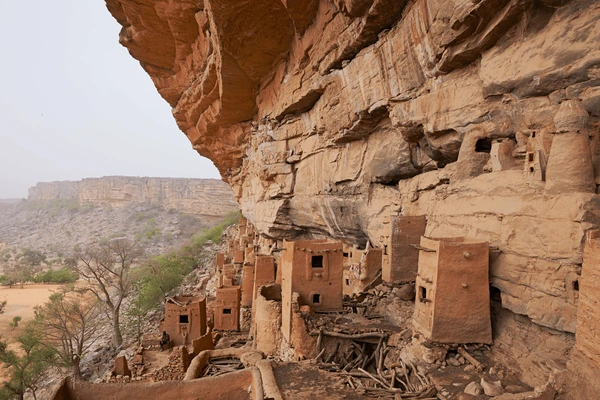
The Dogon Country, located in the Bandiagara Escarpment of Mali, is renowned for its dramatic landscape of cliffs and plateaus, as well as its rich cultural heritage rooted in the traditions of the Dogon people.
Exploration of Cliffside Villages
The Dogon Country is dotted with cliffside villages that cling to the rugged terrain of the Bandiagara Escarpment. These villages, including Sangha, Songo, and Youga Na, are characterized by their unique architecture and strategic defensive positions, offering panoramic views of the surrounding plains. The villages are often accessed via narrow paths and stairways carved into the cliffs, creating a sense of mystery and adventure for visitors exploring this UNESCO World Heritage site.
Cultural Significance
Ancient Cave Dwellings
One of the most striking features of the Dogon Country is its ancient cave dwellings, known as “Tellems.” These cave complexes, carved into the sandstone cliffs by the Tellem people centuries ago, served as both residences and burial sites. The intricate architecture of the caves, combined with their remote and elevated locations, reflects the ingenuity and adaptability of the Tellem and later Dogon communities in adapting to their challenging environment.
Traditional Dogon Culture and Rituals
The Dogon people are renowned for their rich cultural traditions, which encompass spiritual beliefs, social customs, and artistic expressions. Traditional Dogon villages are organized around ancestral shrines, communal meeting places, and sacred sites where rituals and ceremonies are performed to honor ancestors and spirits. The Dogon are also known for their vibrant masks, intricate wood carvings, and elaborate oral traditions that recount the history and cosmology of their society.
Visiting the Dogon Country offers travelers a profound insight into Mali’s cultural diversity and the resilience of its indigenous communities. From exploring cliffside villages and ancient cave dwellings to witnessing traditional rituals and artistic craftsmanship, the Dogon Country provides a captivating journey into one of West Africa’s most unique and culturally significant regions. It is a place where natural beauty intertwines with cultural heritage, inviting visitors to discover the timeless traditions and enduring spirit of the Dogon people
Bamako: Mali’s Capital City
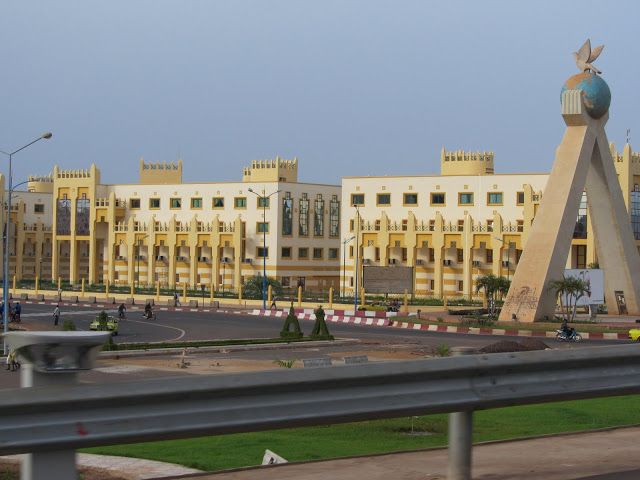
Bamako, nestled on the banks of the Niger River, serves as Mali’s vibrant cultural and economic heart. As one of West Africa’s fastest-growing cities, Bamako blends modernity with traditional African charm, offering visitors a dynamic urban experience.
Overview of Mali’s Capital City
Bamako is a bustling metropolis renowned for its lively markets, diverse cuisine, and rich cultural tapestry. It serves as a melting pot where Mali’s diverse ethnic groups converge, creating a mosaic of languages, traditions, and artistic expressions. The city’s skyline is dotted with modern skyscrapers alongside traditional mud-brick buildings, reflecting its rapid urbanization while preserving its cultural heritage.
Historical Sites in Bamako
National Museum of Mali
The National Museum of Mali stands as a treasure trove of Mali’s historical artifacts, sculptures, and archaeological finds. Located in the heart of Bamako, the museum showcases a diverse collection that spans the country’s prehistoric era to the medieval empires and beyond. Highlights include ancient sculptures, traditional textiles, and artifacts that offer insights into Mali’s rich cultural heritage and archaeological discoveries.
Cultural Insights through Local Markets and Neighborhoods
Bamako’s markets and neighborhoods provide a window into everyday life and cultural traditions. The bustling Marché de Medina is a vibrant hub where locals gather to sell fresh produce, textiles, crafts, and traditional medicines. It offers a sensory journey through Mali’s culinary delights, traditional crafts, and vibrant fabrics. Neighborhoods like Badalabougou and Quartier du Fleuve showcase traditional mud-brick architecture, lively street scenes, and community gatherings that highlight the warmth and hospitality of Bamako’s residents.
Visiting Bamako allows travelers to immerse themselves in Mali’s contemporary urban life while exploring its historical roots and cultural diversity. Whether discovering ancient artifacts at the National Museum or navigating the vibrant markets and neighborhoods, Bamako offers a captivating blend of history, culture, and modernity that defines Mali’s capital city
Mopti: The “Venice of Mali”
Mopti, affectionately known as the “Venice of Mali,” is a bustling port city located at the confluence of the Niger and Bani rivers in central Mali. It serves as a vital commercial and cultural hub, characterized by its vibrant marketplaces, traditional architecture, and scenic waterways.
Description of Mopti as the “Venice of Mali”
Mopti’s nickname, the “Venice of Mali,” stems from its unique geography and bustling river life. The city is built on three islands—Bambara Maoundé, Bozo, and Sorogani—connected by narrow alleyways, footbridges, and bustling markets. Its location at the crossroads of the Niger River delta has historically made it a center for trade between northern and southern Mali, as well as neighboring countries.
Activities in Mopti
Exploration of the Old Town
Exploring Mopti’s old town offers visitors a glimpse into its rich cultural heritage and vibrant street life. Wander through narrow streets lined with traditional mud-brick houses adorned with ornate wooden doors and intricate carvings. Visit the Grand Mosque of Mopti, a landmark that reflects the city’s Islamic heritage and architectural prowess.
Boat Trips on the Niger River to Nearby Villages
A highlight of visiting Mopti is taking a boat trip along the Niger River to explore nearby villages and fishing communities. Local pirogues (traditional wooden boats) navigate the river’s meandering channels, offering picturesque views of riverside life and opportunities to interact with local fishermen and artisans. Popular destinations include the Fulani village of Konna and the Bozo fishing village of Komoguel.
Visiting Mopti allows travelers to experience Mali’s cultural diversity and natural beauty while immersing themselves in the rhythms of river life. Whether strolling through the old town’s bustling markets or cruising along the Niger River, Mopti offers a captivating journey through Mali’s history, traditions, and scenic landscapes.
Sikasso: Historical Attractions in the Sikasso Region
Sikasso, located in southeastern Mali near the borders with Côte d’Ivoire and Burkina Faso, is renowned for its rich historical heritage and cultural diversity. The region’s history is deeply intertwined with the rise and fall of ancient kingdoms and the preservation of traditional customs.
Historical Attractions in Sikasso
Koutiala Museum
The Koutiala Museum, located in the town of Koutiala in the Sikasso Region, is a cultural hub that showcases artifacts and exhibits related to the region’s history, traditions, and craftsmanship. The museum’s collection includes ancient tools, pottery, textiles, and musical instruments, offering insights into the daily life, agricultural practices, and artistic traditions of the local communities. Visitors can explore displays that highlight Sikasso’s cultural diversity and the resilience of its people throughout history.
Ruins of the Kenedougou Kingdom
The ruins of the Kenedougou Kingdom, located near Sikasso, are a testament to the region’s ancient history and political prominence. The kingdom flourished during the 19th century as a powerful political entity that controlled trade routes and agricultural resources in the area. The ruins, which include remnants of palaces, fortifications, and ceremonial sites, offer glimpses into the kingdom’s architectural achievements and societal structure. Visitors can explore the archaeological remains and learn about the kingdom’s rise and eventual decline through guided tours and interpretive exhibits.
Visiting Sikasso and its historical attractions provides travelers with a deeper understanding of Mali’s diverse cultural heritage and the historical forces that have shaped the region. From exploring museum exhibits that highlight traditional craftsmanship to uncovering the mysteries of ancient kingdoms through archaeological sites, Sikasso offers a captivating journey into Mali’s past and its enduring cultural legacy.
Gao: History as an Ancient Trading Hub and Capital of the Songhai Empire
Gao, situated on the eastern bank of the Niger River in northeastern Mali, boasts a storied history as an influential center of trade, scholarship, and political power in West Africa. It served as the capital of the Songhai Empire during its zenith, playing a pivotal role in the region’s economic and cultural landscape.
History of Gao
Gao’s history dates back to ancient times when it was a prominent trading post along the trans-Saharan trade routes. The city’s strategic location facilitated commerce between North Africa, the Mediterranean world, and sub-Saharan Africa, making it a hub for the exchange of goods, ideas, and cultural influences. Gao’s prosperity continued to grow under the Songhai Empire, which reached its peak in the 15th and 16th centuries under rulers such as Askia Muhammad I.
Notable Landmarks in Gao
Banks of the Niger River
The Niger River, flowing alongside Gao, has played a vital role in the city’s development and identity. Its banks served as bustling marketplaces where merchants traded gold, salt, ivory, and other commodities. The river also facilitated the movement of people and goods, connecting Gao to distant lands and contributing to its cosmopolitan character.
Archaeological Sites and Cultural Insights
Gao is home to several archaeological sites that offer glimpses into its ancient past and cultural heritage. These sites include remnants of ancient settlements, defensive fortifications, and ceremonial structures that reflect Gao’s strategic importance and architectural achievements. Visitors can explore these sites to learn about the city’s evolution, from its early origins as a trading post to its prominence as a political and cultural capital under the Songhai Empire.
Visiting Gao allows travelers to immerse themselves in Mali’s rich historical legacy and explore the remnants of an ancient civilization that once dominated the Sahel region. Whether marveling at archaeological treasures or strolling along the banks of the Niger River, Gao offers a captivating journey through time and a deeper appreciation for Mali’s enduring cultural heritage
Kangaba: Historical Significance within the Mali Empire
Kangaba, located in southwestern Mali, holds significant historical importance as one of the early capitals of the Mali Empire. Founded around the 13th century, Kangaba played a crucial role in the empire’s formation and expansion under Sundiata Keita, the legendary founder of the Mali Empire.
Overview of Kangaba’s Historical Significance
Kangaba served as a strategic center for Sundiata Keita’s campaigns to unite the Mandinka people and establish the Mali Empire. The city’s location near the Bani River facilitated trade and agricultural activities, contributing to its prosperity and influence in the region. Kangaba’s rise as a political and cultural capital during the empire’s early years exemplifies its pivotal role in shaping Mali’s history and identity.
Key Features of Kangaba
Ruins of Ancient City Walls
One of Kangaba’s notable features is its ancient city walls, which once enclosed the settlement and provided defensive fortifications against external threats. These ruins, composed of earthworks and remnants of mud-brick structures, offer insights into the city’s architectural achievements and defensive strategies during the Mali Empire’s formative period.
Historical Insights into Mali Empire’s Governance and Architecture
Visiting Kangaba provides visitors with a deeper understanding of the Mali Empire’s governance structure, societal organization, and architectural accomplishments. Exploring archaeological sites and interpretive exhibits allows travelers to trace the empire’s evolution from its humble beginnings in Kangaba to its zenith under Mansa Musa and subsequent rulers. Kangaba’s historical significance illuminates the empire’s cultural legacy and its enduring impact on Mali’s cultural heritage.
By exploring Kangaba’s ruins and historical sites, travelers can uncover the foundations of Mali’s illustrious history and appreciate the achievements of its early rulers. Kangaba stands as a testament to the resilience and cultural richness of the Mali Empire, offering a captivating journey through time and a deeper appreciation for West Africa’s ancient civilizations.
Tomb of Askia: UNESCO World Heritage Site in Gao
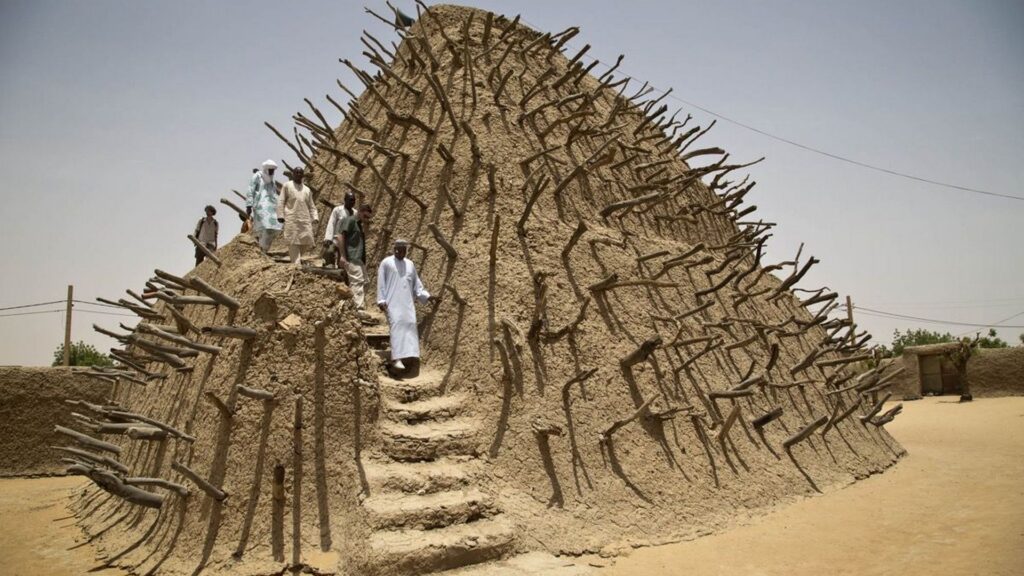
The Tomb of Askia, located in Gao, Mali, stands as a UNESCO World Heritage site and a testament to the architectural and cultural achievements of the Songhai Empire under the reign of Askia Mohammed I.
Architectural Significance and History of Askia Mohammed’s Rule
Built in the late 15th century, the Tomb of Askia is an impressive example of Sudano-Sahelian architecture, characterized by its distinctive pyramid shape and intricate mud-brick construction. The tomb is adorned with ornamental features and geometric designs that reflect the artistic prowess and cultural sophistication of the Songhai Empire during Askia Mohammed’s rule. As the second ruler of the empire, Askia Mohammed I is celebrated for his leadership, military prowess, and promotion of Islamic scholarship and culture.
Cultural Importance as a Pilgrimage Site
The Tomb of Askia holds profound cultural and religious significance as a pilgrimage site for Muslims in Mali and beyond. It serves as a place of reverence and spiritual contemplation, embodying the legacy of Askia Mohammed I and his contributions to Islam and governance in West Africa. Pilgrims visit the tomb to pay their respects to Askia Mohammed and seek blessings for health, prosperity, and spiritual fulfillment. The site’s cultural importance transcends its architectural beauty, symbolizing unity, heritage, and continuity within Mali’s diverse cultural landscape.
Visiting the Tomb of Askia offers travelers a glimpse into Mali’s rich history and the enduring legacy of the Songhai Empire. Whether admiring its architectural splendor, learning about Askia Mohammed’s rule, or participating in cultural rituals, the tomb provides a profound cultural and historical experience that highlights Mali’s contributions to world civilization and the resilience of its people across centuries.
Conclusion
In conclusion, Historical Tours in Mali, culture, and architectural marvels that captivate visitors from around the globe. From the ancient city of Timbuktu, once a beacon of learning and trade, to the vibrant markets of Djenne and the cliffside villages of Dogon Country, Mali’s historical tours offer a profound journey through time.
Each region, whether exploring the mud-brick mosques of Djenne, the ancient city walls of Kangaba, or the majestic Tomb of Askia in Gao, reveals layers of Mali’s cultural heritage. These sites not only showcase the architectural prowess and artistic achievements of past civilizations but also underscore Mali’s resilience and cultural continuity amidst changing times.
Through historical tours, travelers gain deeper insights into Mali’s diverse ethnic groups, their traditions, and their contributions to global history. Whether navigating the bustling streets of Bamako or cruising the Niger River in Mopti, Mali’s cities and landscapes invite exploration and discovery, fostering a connection between past and present.
As Mali continues to preserve and promote its cultural heritage, these historical tours serve as vital avenues for understanding the country’s identity and its place in the broader context of African and world civilizations. Whether seeking ancient manuscripts in Timbuktu or marveling at the architectural grandeur of the Great Mosque of Djenne, visitors to Mali embark on a transformative journey that celebrates the enduring spirit and cultural richness of this remarkable nation.
Summary of Mali’s Diverse Historical Tours
Mali’s historical tours offer a captivating journey through a tapestry of civilizations, spanning ancient empires, vibrant cultural traditions, and architectural marvels. From the legendary city of Timbuktu with its scholarly legacy to the cliffside villages of Dogon Country and the bustling markets of Bamako, each destination reveals a unique facet of Mali’s rich heritage.
Travelers exploring Mali encounter the grandeur of mud-brick mosques in Djenne, the ancient city walls of Kangaba, and the serene riverside towns of Mopti. These sites not only showcase Mali’s architectural prowess and artistic achievements but also highlight its diverse ethnic groups and their enduring traditions.
Importance of Preserving and Promoting Mali’s Cultural Heritage through Tourism
Preserving Mali’s cultural heritage through tourism is crucial for several reasons. Firstly, it fosters a deeper appreciation and understanding of Mali’s history and cultural diversity among both domestic and international visitors. By visiting historical sites and engaging with local communities, tourists contribute to the preservation of traditional craftsmanship, storytelling, and rituals that are integral to Mali’s identity.
Secondly, tourism promotes economic growth and sustainable development in Mali’s rural and urban areas. By attracting tourists to historical sites, communities can benefit from increased income opportunities through hospitality services, local crafts, and cultural performances. This, in turn, helps to support livelihoods and preserve traditional practices that might otherwise be at risk of decline.
Thirdly, promoting Mali’s cultural heritage through tourism enhances global awareness and appreciation of African civilizations and contributions to world history. It reinforces Mali’s position as a custodian of ancient manuscripts, architectural treasures, and oral traditions that offer invaluable insights into the continent’s past and present.
In conclusion, Mali’s diverse historical tours not only offer enriching experiences for travelers but also play a vital role in safeguarding and celebrating the country’s cultural heritage. By preserving and promoting Mali’s historical sites and traditions, tourism contributes to sustainable development, cultural exchange, and global dialogue, ensuring that Mali’s rich legacy continues to inspire and educate future generations
